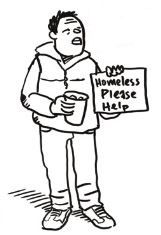Are homelessness figures being massaged?

Serious questions are being raised about the veracity of homelessness numbers emanating from the Department of Housing, Planning and Local Government.
Earlier this week, Social Justice Ireland noted that the discovery of a ‘classification error’ in advance of the publication of the March 2018 figures means the reported number of people accessing emergency accommodation remains below 10,000.
In his press release on the latest figures, Minister Eoghan Murphy pointed to ‘at least 600 individuals’ as having been identified as homeless and accessing emergency accommodation, when they were not. The release went on to state that ‘some but not all’ of these individuals were removed from the total numbers, but work is ongoing with Local Authorities to address the situation.
A classification error would be bad enough. The monthly reporting of homelessness figures is a relatively new activity, but an extremely important one. It is crucial that accurate numbers are available so that both policymakers, stakeholder organisations and the public are aware of the scale of the problem and whether the measures being implemented to deal with it are having an effect. It is imperative that the numbers be reported accurately, competently and without interference.
Today, thejournal.ie reported that Louth County Council said it was told by the Housing Department not to include in their homeless figures people that the council considers to be homeless. This is disturbing for a number of reasons, but mainly because it suggests that the reduction in the number of homeless people in Louth in March was due to the manipulation of figures and not through any effective policy measure.
It should go without saying that if 100 households (as is reportedly the case in Louth) are being accommodated on a temporary basis in houses by the council - even if they are private houses rented from landlords - and as an emergency alternative then their housing needs are not being met and they are homeless.
The Minister's statement earlier this week suggests this kind of alternative accounting relates to "a number of local authorities" and suggested at least five were affected. Clarification is now needed as to whether the numbers being put forward by other local councils are being interfered with by the Department or by government in the same manner.
The exact number of individuals removed from the homeless figures has not been released, but even a conservative estimate of 50 per cent, or 300 people, indicates a net increase of 174 homeless people accessing emergency accommodation between February and March of this year.
UItimately, the Department of Housing, Planning and Local Government needs to urgently review its data collection and analysis capabilities. The lack of reliable data, from construction generally to social housing to homelessness, is unacceptable and provides a poor base for policy-making. Social Justice Ireland calls on the Department to develop an accurate and transparent data reporting system for use by Local Authorities, with clear guidelines on what is expected to ensure consistencies across each area.
The March 2018 Homeless figures can be accessed on the Department's Rebuilding Ireland website.